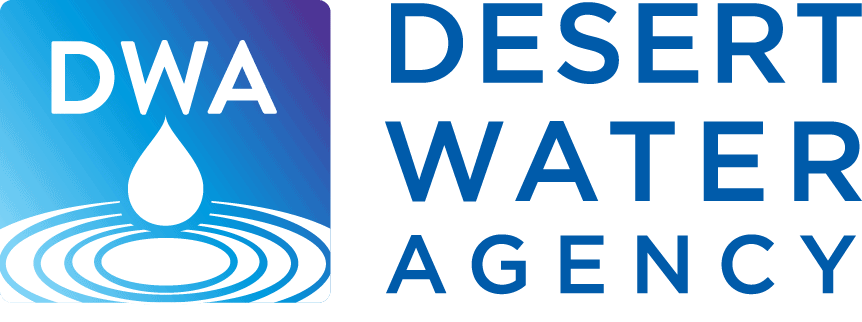Outdoor Tips
In our area about 70-80% of water is used outdoors.
Sprinkler water running off
- Check the system for leaks, clogs and wear that are wasting gallons of water.
- Cap sprinklers or bubblers that are no longer being used to prevent waste.
- Adjust sprinkler nozzles to eliminate overspray onto hardscapes.
- Check your irrigation system pressure – your system should not need more than 60 PSI (Pounds Per Square Inch).
- Spray heads being fed too much pressure will likely cause misting. Water coming out in smaller particles is much easier to get carried away by wind and doesn’t penetrate the soil as it should.
- Optimal pressure for a spray head is 30 PSI, and 40 PSI for a rotator.
- Install a pressure regulator on your irrigation valves, if needed.
- Sprinkler heads that have built-in pressure regulation can be purchased online or at a local irrigation supply store.
- Apply water at a rate that allows soil to absorb it and limits runoff. For example, instead of watering once for ten minutes, water five times for two minutes each time.
- Plant responsibly – keep turf only where it’s practical and replace thirsty plants with native and drought-tolerant plants. Consider a low water-use groundcover like kurapia
- Consider installing a weather-based irrigation controller so that you’re watering the right amount for each day’s weather. DWA has a smart controller program that includes a FREE device and install.
Watering plants efficiently
- More yards are harmed by too much water than not enough. Overwatering causes nutrients to be flushed away, causes shallow roots and makes your yard vulnerable to weeds and disease.
- Water between 4:00 and 6:00 AM when evaporation is low. This gives the ground a chance to soak the water in and reach the root system of the plants before the heat of the day.
- Create water zones by putting plants together that have similar water needs.
- Test, adjust and repair your sprinkler heads and drip emitters weekly. Make sure the system is adjusted properly to avoid watering sidewalks and driveways.
- Consider replacing your old time clock with one of the new smart irrigation controllers on the market today. These controllers irrigate based on evapotranspiration or air temperature.
- Use soil sensors to assess if your plant actually needs to be watered as much or as often.
- Put a layer of mulch around your trees.
- Click here for a month-by-month outdoor watering guide.
Sprinklers 101
- Water needs vary based on types of sprinklers used, amount of sun an area receives, soil type and the kind of plant being watered (lawn vs. shrubs, for example).
- Sprinklers should be on a separate valve than lower flow irrigation.
- Sprinkler pressure should be about 30 pounds per square inch (PSI).
- Sprinklers should throw water far enough to reach the next sprinkler head. Head to head coverage is ideal to ensure uniform watering.
- If you have water running off from your irrigated area, try watering for shorter periods of time.
- Rotating sprinklers are more efficient than spray heads. They also help mitigate runoff.
Leaks
- Check your irrigation system for leaks regularly.
- Check your sprinkler system once a week to make sure you don't have any broken sprinkler heads.
- Pools can be another source of leaks. If you turn your autofill off and the water level drops drastically (more than evaporation), you may have a leak.
- Perpetually wet areas of soil or concrete can be a sign of a broken pipe.
- Click here for more leak detection tips.
Conversions
- Getting rid of grass can be one of the best ways to save water on your property.
- If the only time you walk on the grass is to mow it, you may consider getting rid of it.
- Desert landscaping still uses some water but in most cases it is a mere fraction of what grass requires.
- Artificial turf requires no irrigation, but may require an occasional wash down.
- DWA offers rebates for turf removal. Visit our turf buy back page.
Indoor Tips
There are plenty of ways to save around your home or business.
Shower
- Install a low-flow shower head. This will allow you to stay in the shower just as long using less water. Look for a model with 2 gallons per minute or less. Standard units use 2.5 gallons per minute.
- Place a bucket in the shower to capture water as it warms up. Use this water outside or to fill your toilet tank. You can also install a tankless water heater.
- Shorten your shower or use a shower timer to make sure that you're not in too long. Five minutes or less is a good rule of thumb.
- If you are taking a bath, only fill it half way.
Toilet
- Install a high-efficiency toilet. That means 1.28 gallons per flush or less. DWA may have a rebate available. Check our toilet rebate page for details.
- Dual flush toilets also save water and are eligible for DWA's rebate program.
- If you hear your toilet running, it may be leaking. Place 5-10 drops of food coloring in the tank and wait 5 minutes. If the water in the bowl has changed colors, you have a leak. DWA also offers leak detection tablets to help you detect toilet leaks. Stop by our office in Palm Springs at 1200 S. Gene Autry Trail to pick up a packet. (While supplies last.)
- Make sure that the parts inside your toilet tank are in good shape. Work out parts can cause water loss.
Sinks
- Install aerators on your faucets to spread the flow of water.
- Make sure your sink isn't leaking. Small drips add up.
- Turn your sink off when you brush your teeth and lather your hands.
- Fill your sink part way if you're rinsing dishes before putting them in the dishwasher.
Washing machine
- Upgrade to a WaterSense/Energy Star model.
- Wash only full loads.
- Run the wash on cool or cold. There are even some detergents specialized for this.
Washing dishes
- Use the same glass for water each day so that you aren't washing multiple glasses.
- Try a new one-pot recipe. Cutting down on extra dishes saves water and time.
- Running a full load on your dishwasher is more efficient than using your sink.
- Soak pots and pans a bit before you scrub and run water.
- If your dishwasher does the job, no need to pre-rinse.
- If you need to rinse, fill your sink only part way before putting them in the dishwasher.
Leaks
- Use our step-by-step guide to use your water meter to check for leaks.
- Check each room of your house for leaks.
- Kitchen
- Bathrooms
- Laundry room/garage
- Click here for more leak detection tips.

